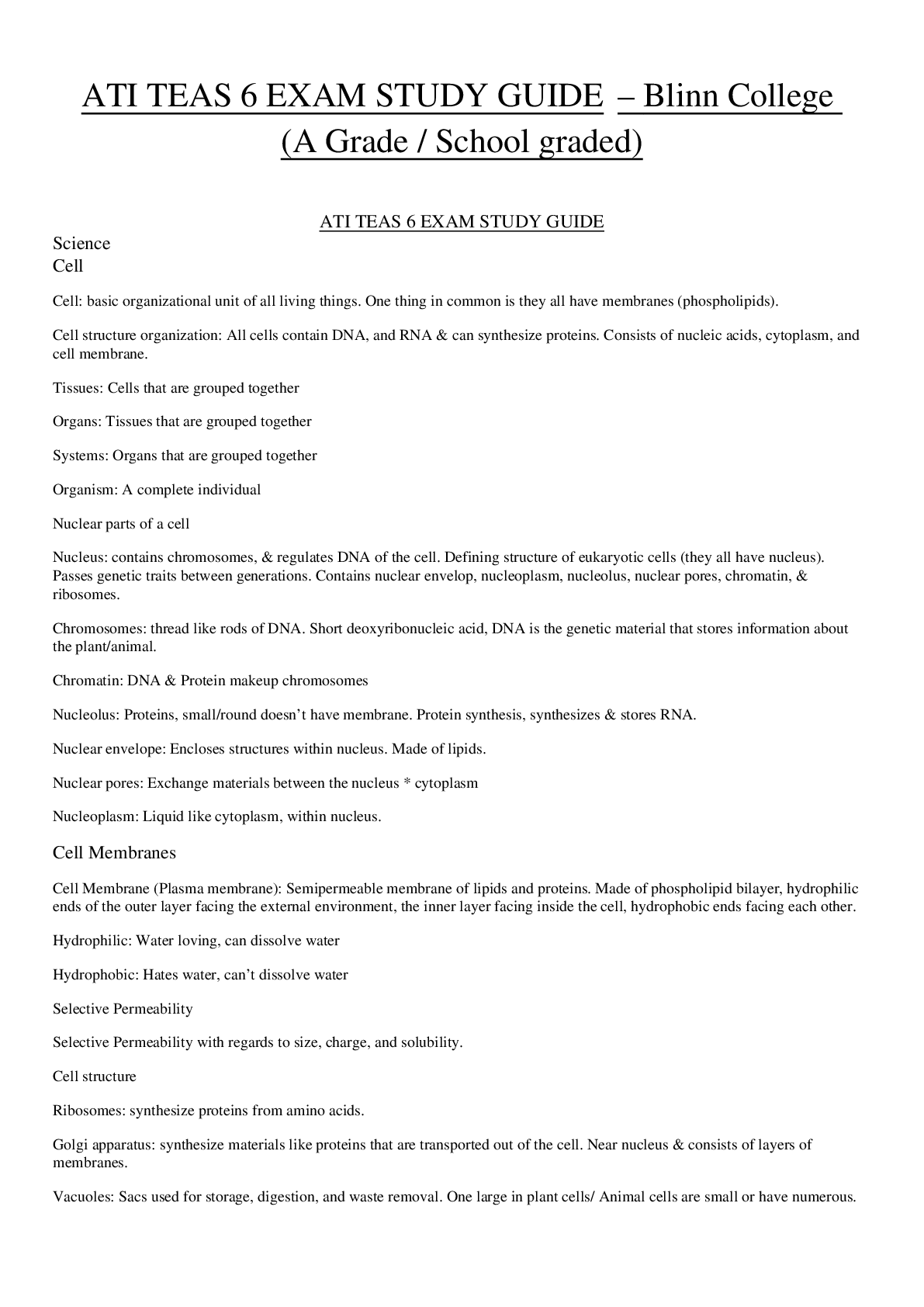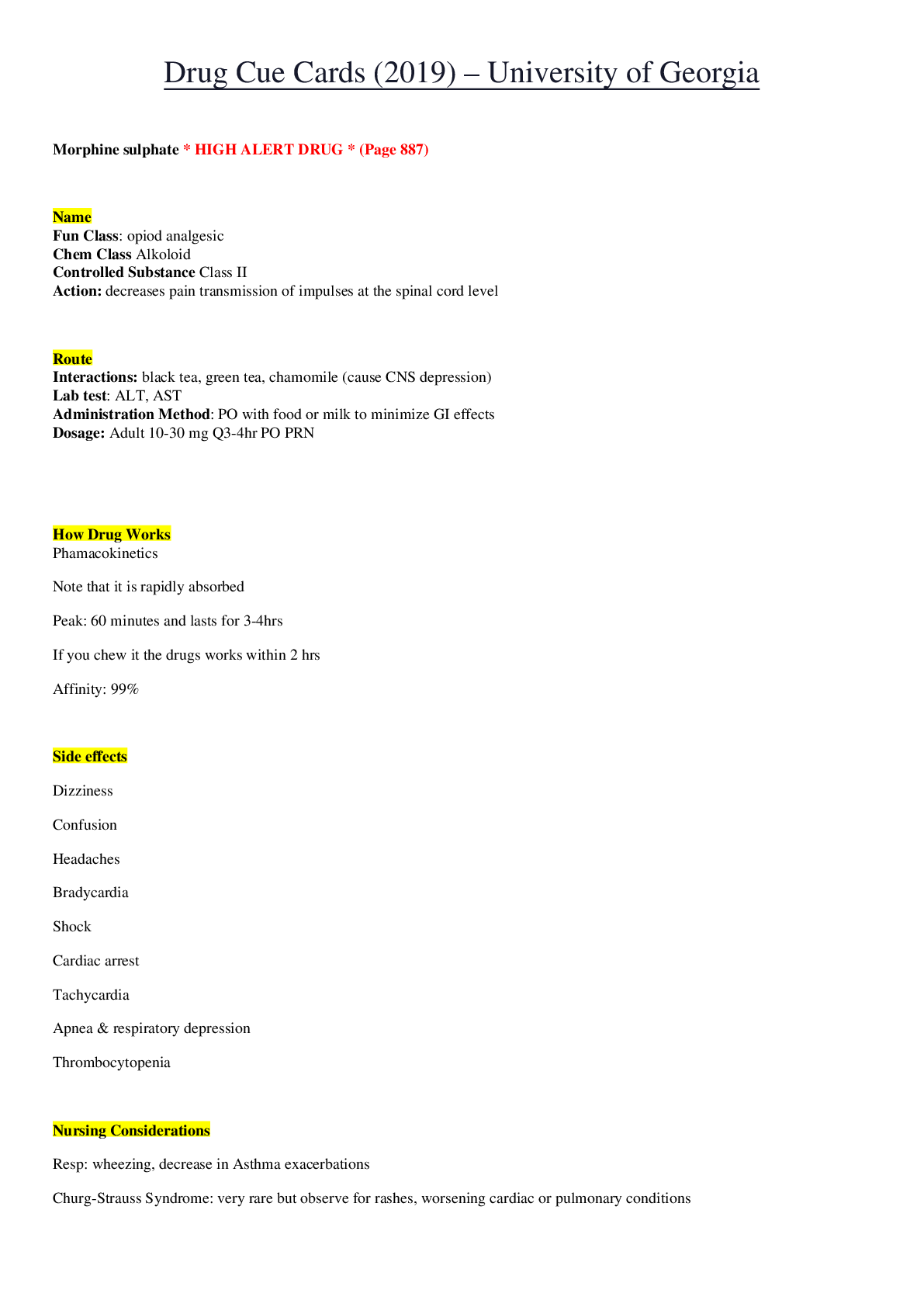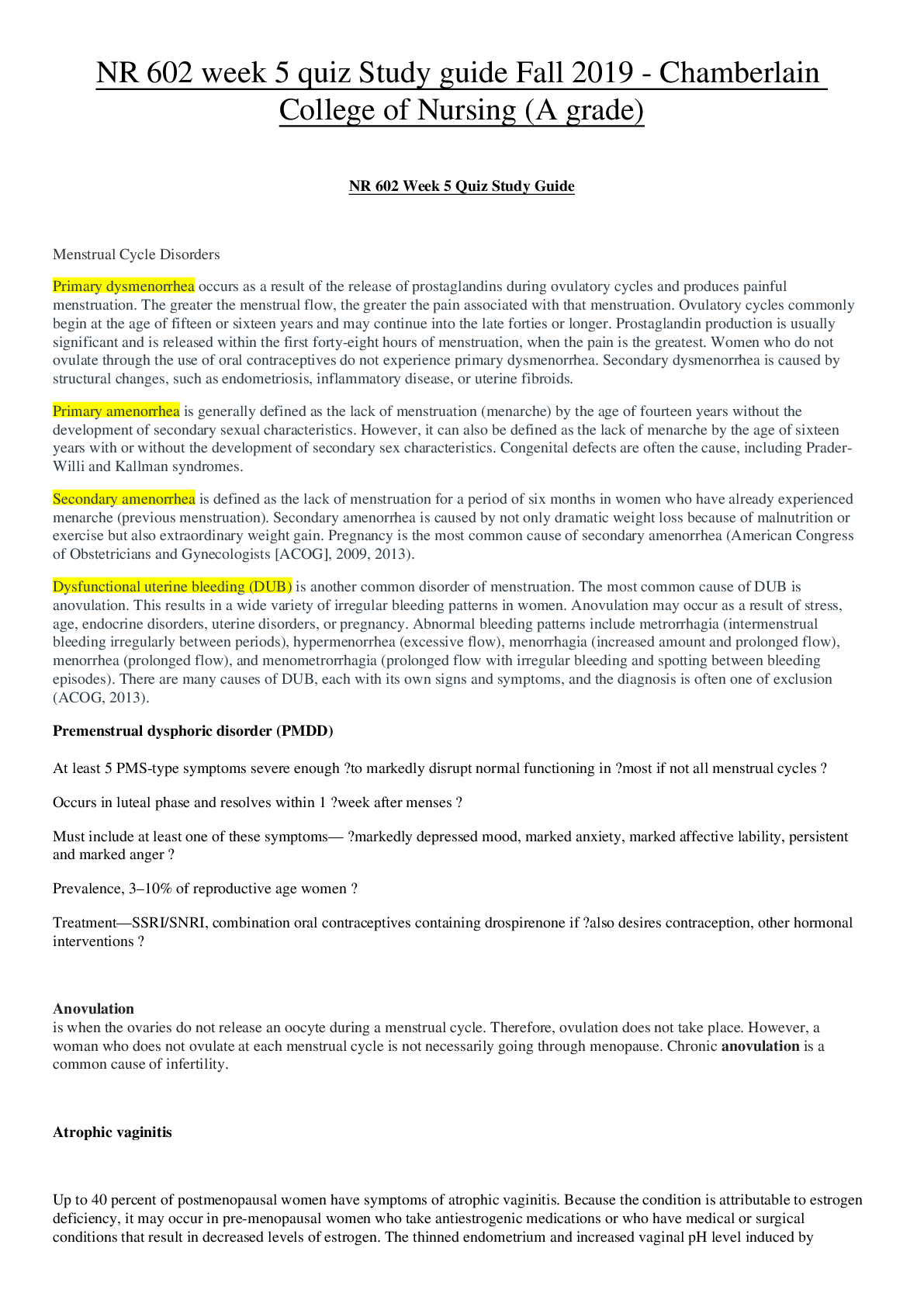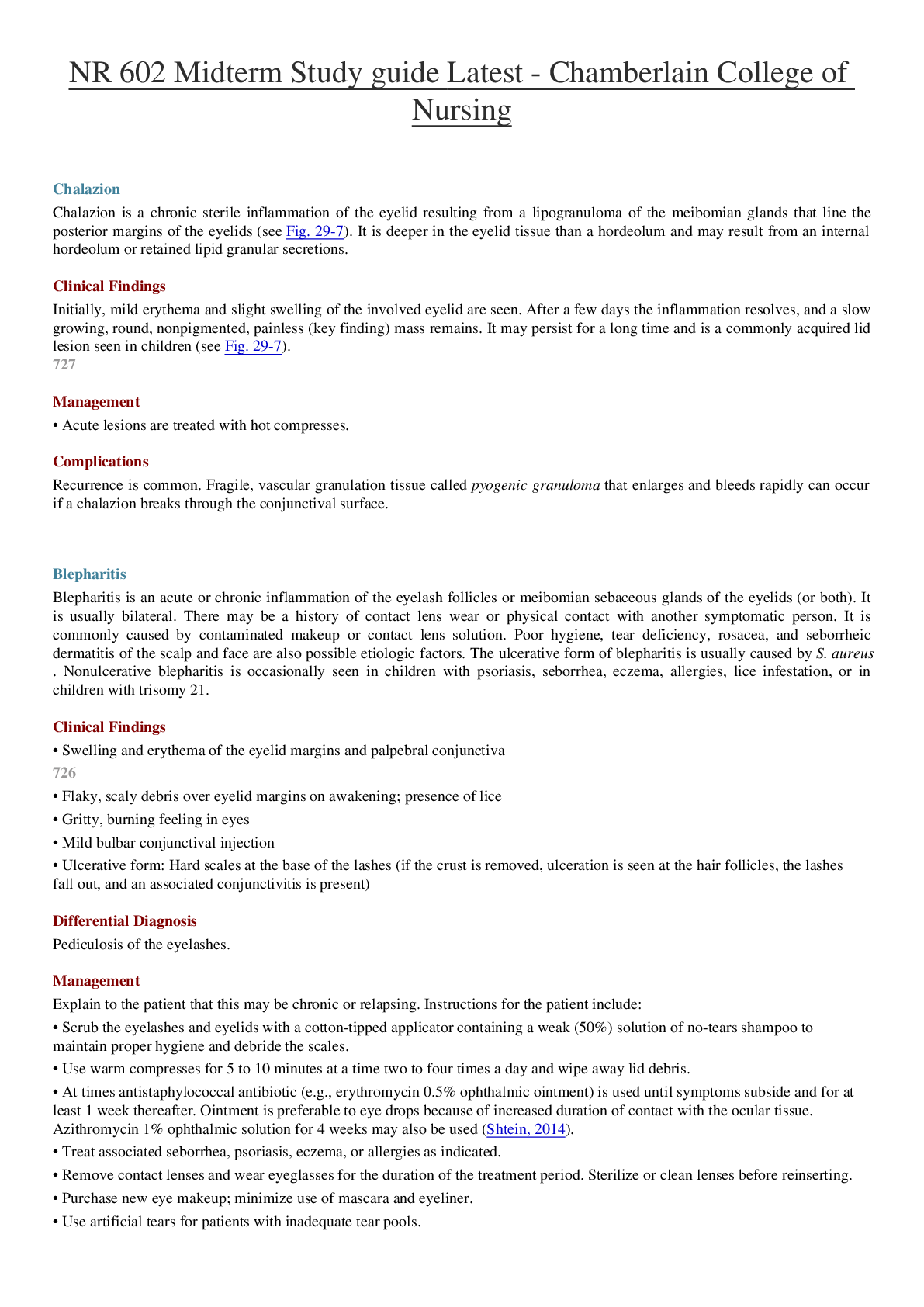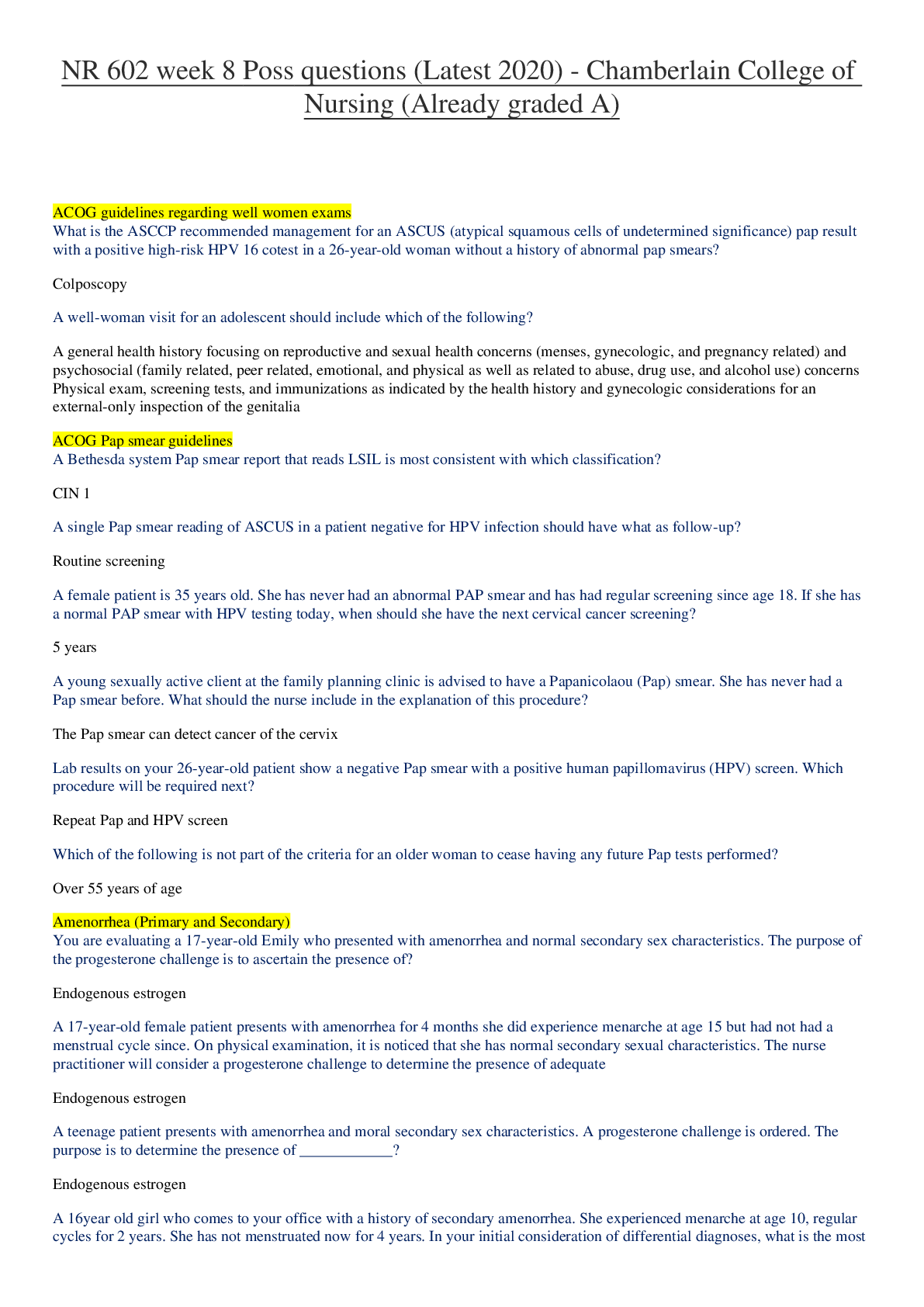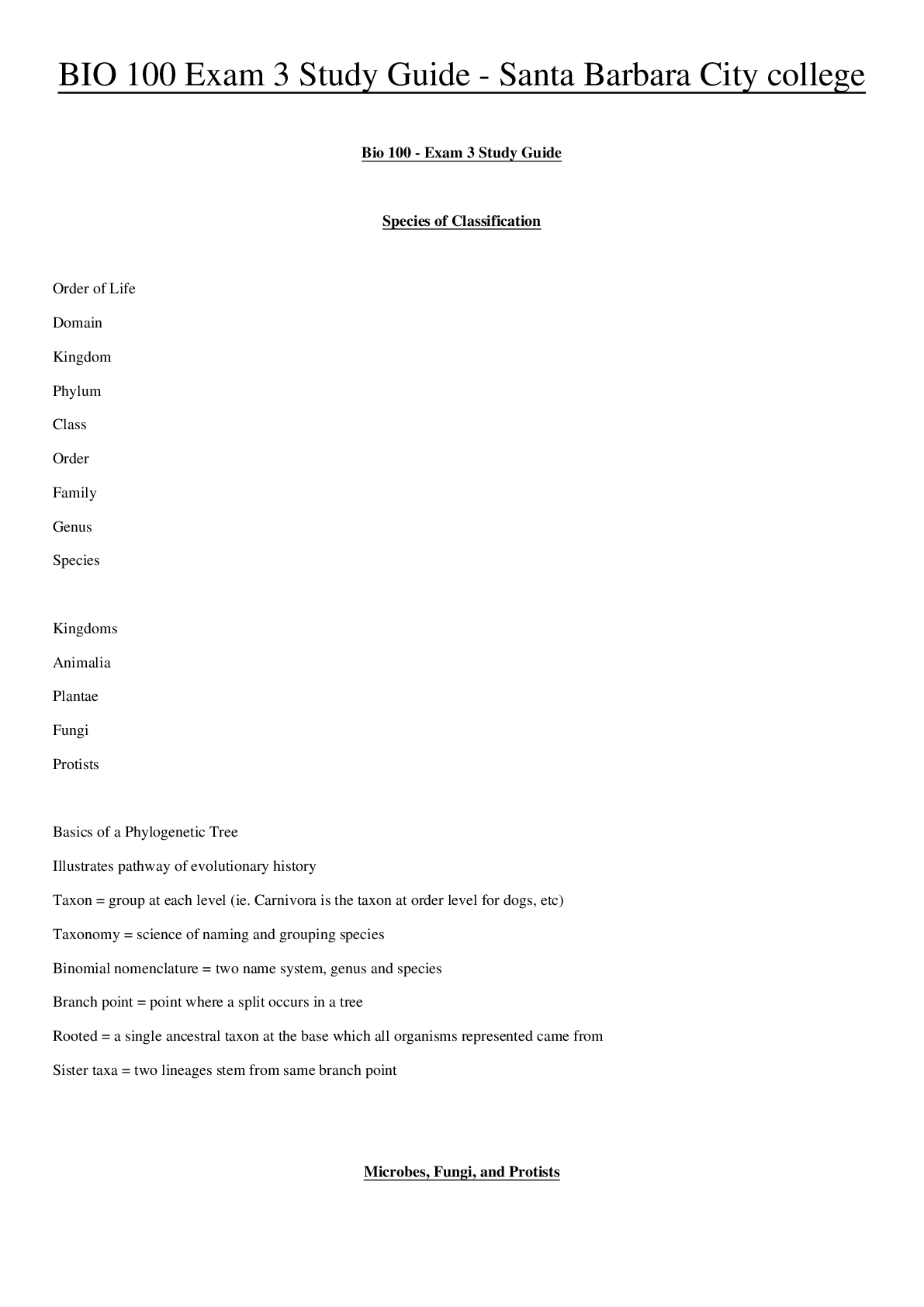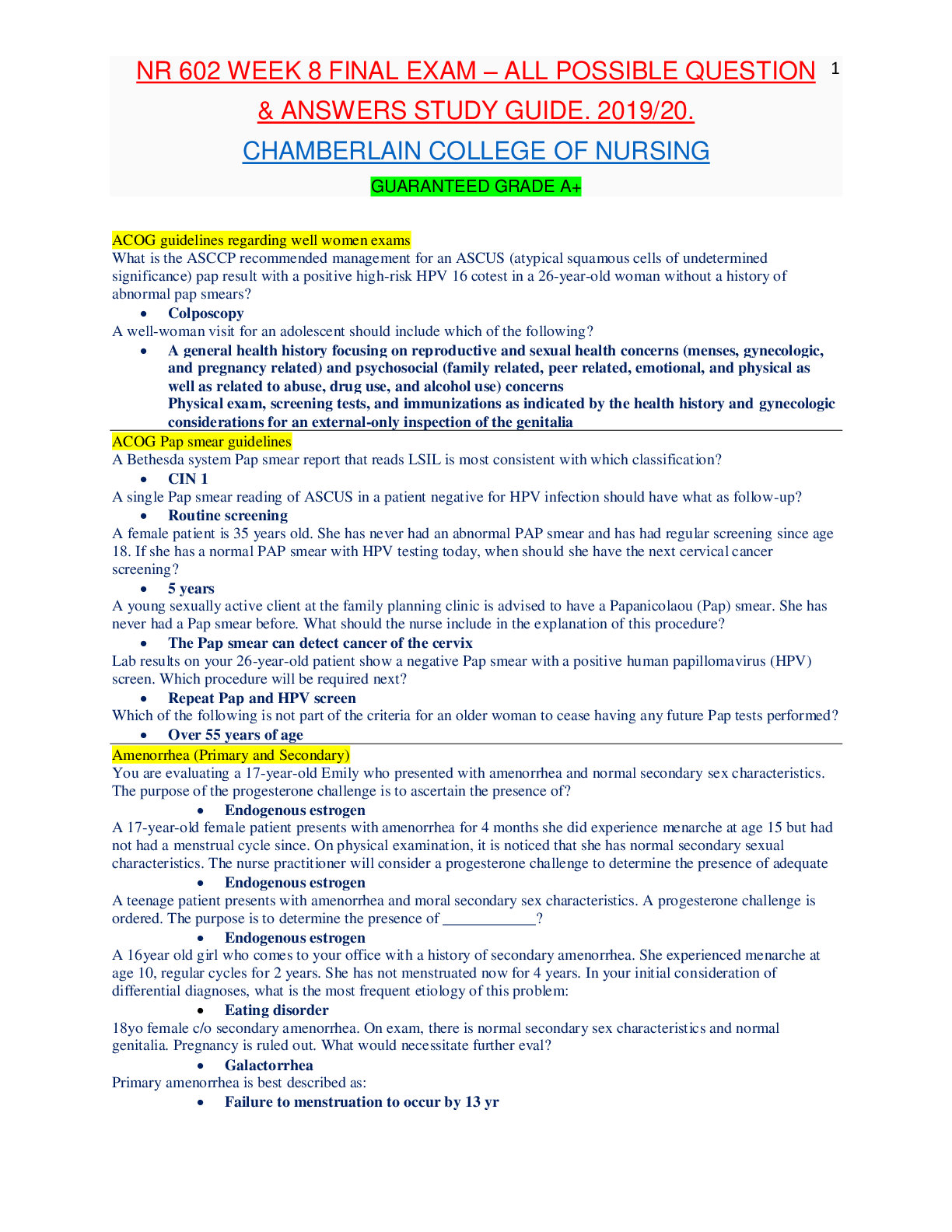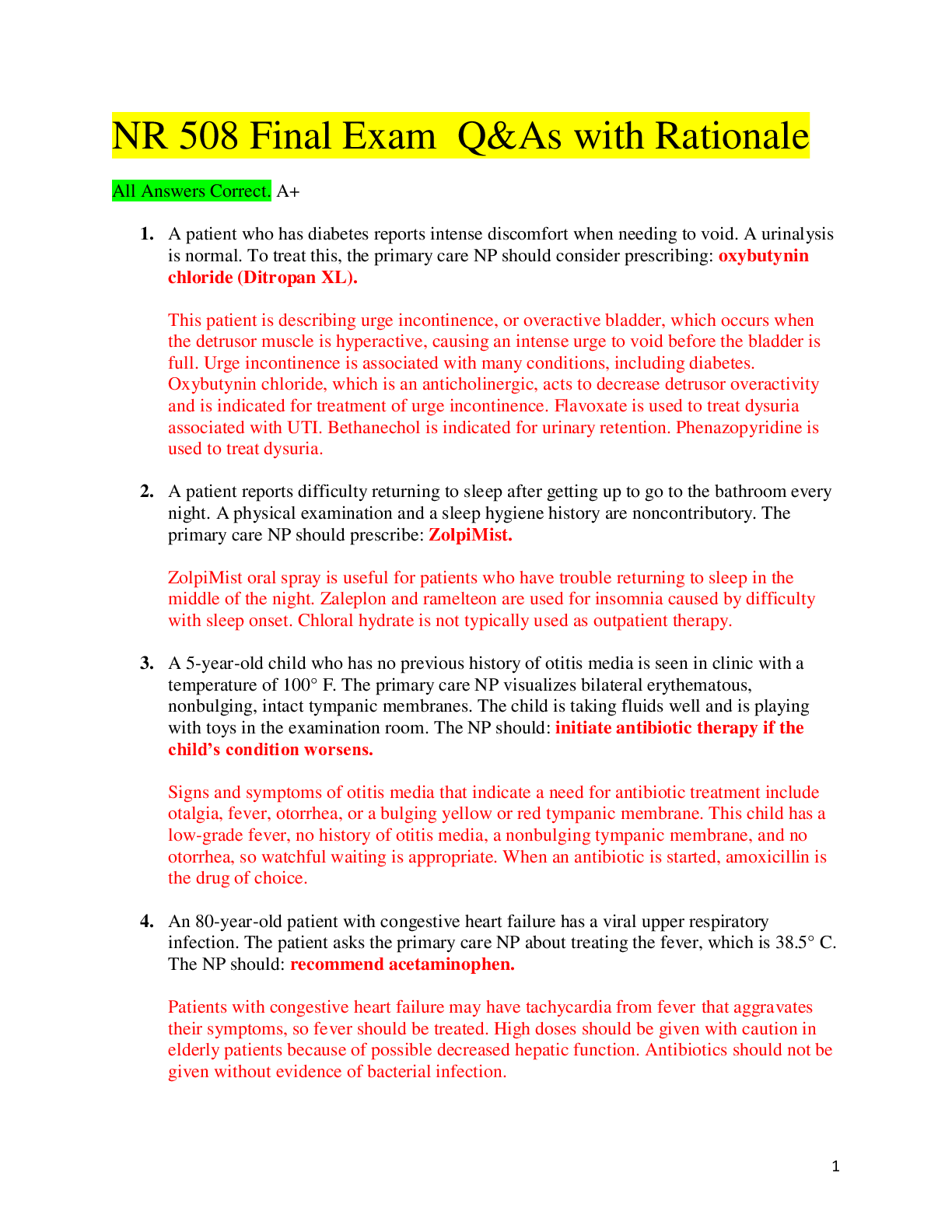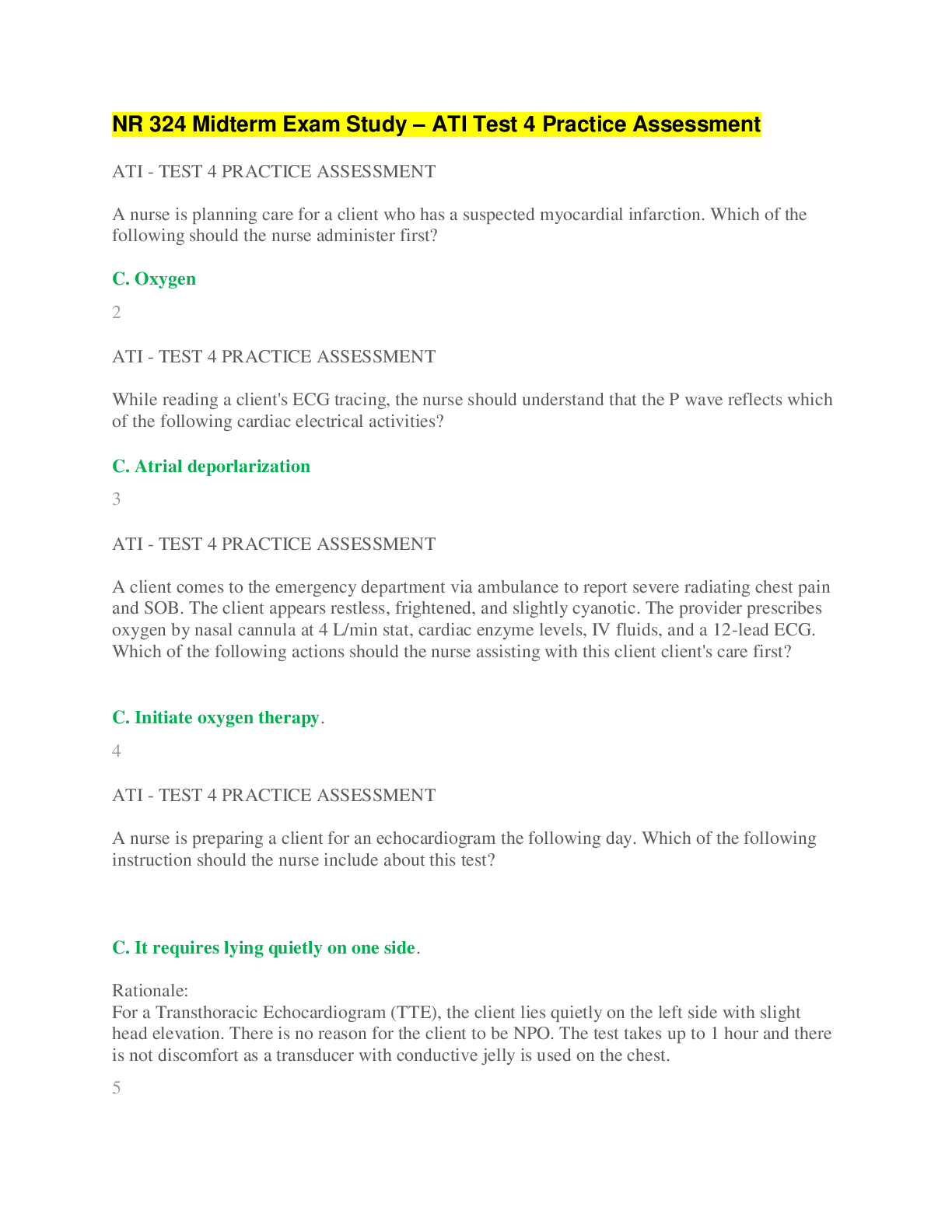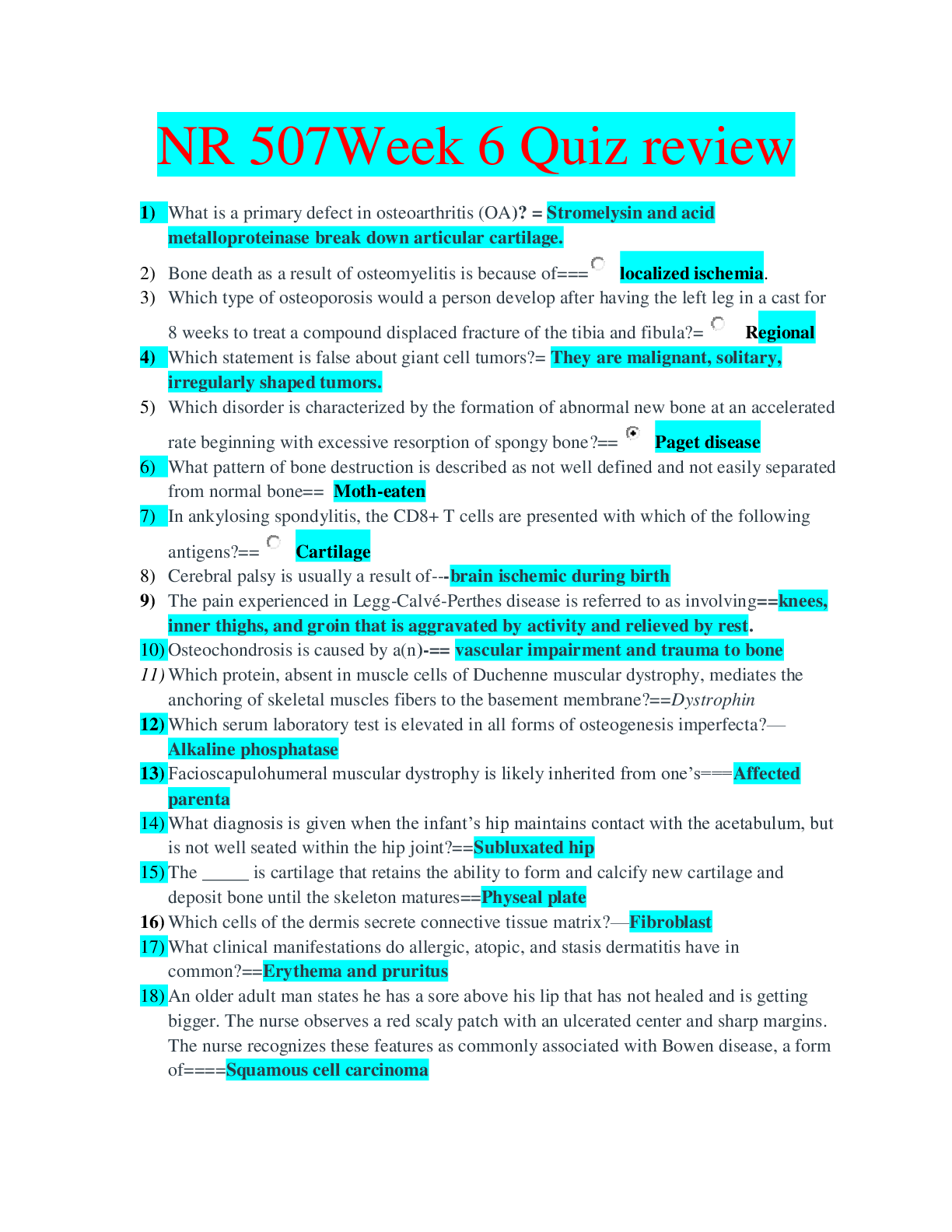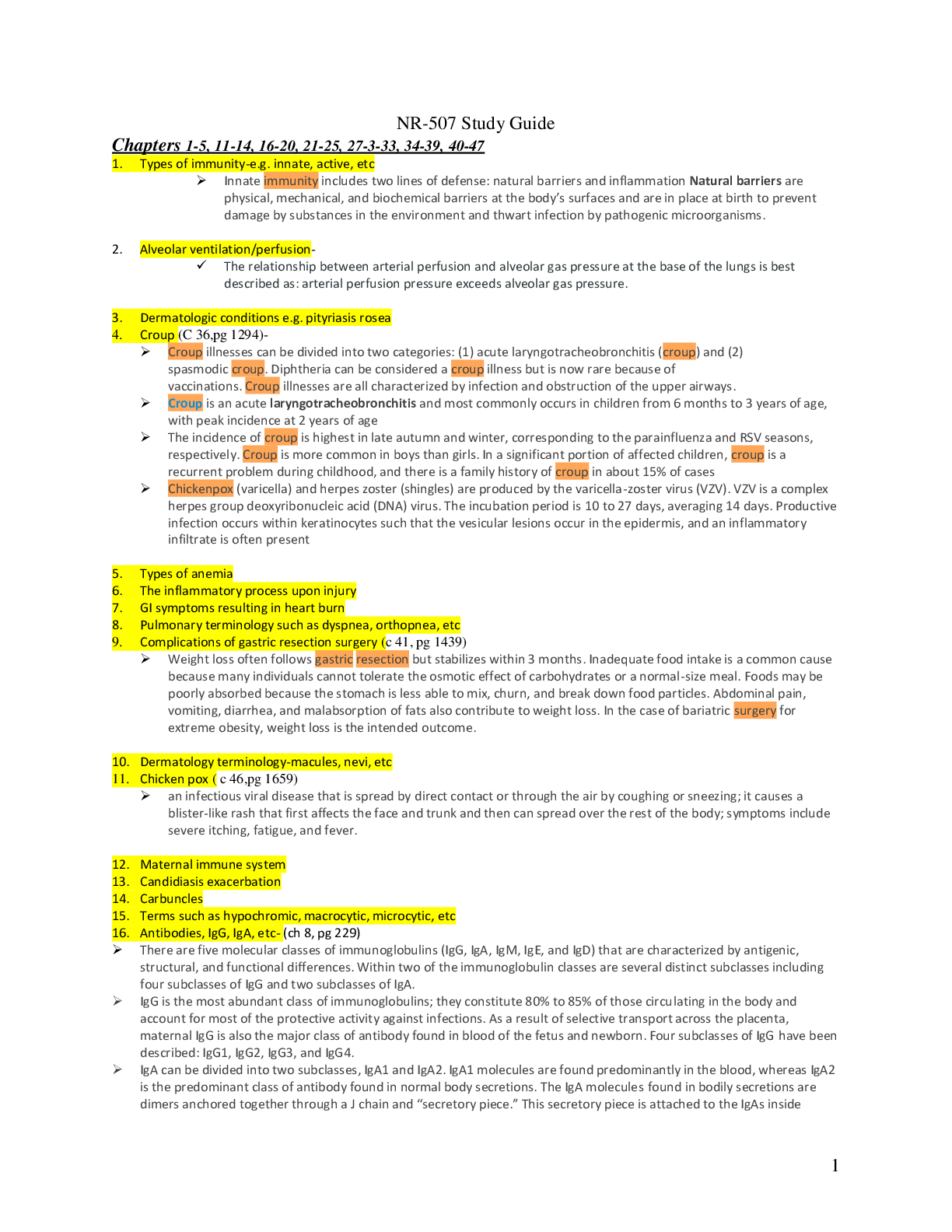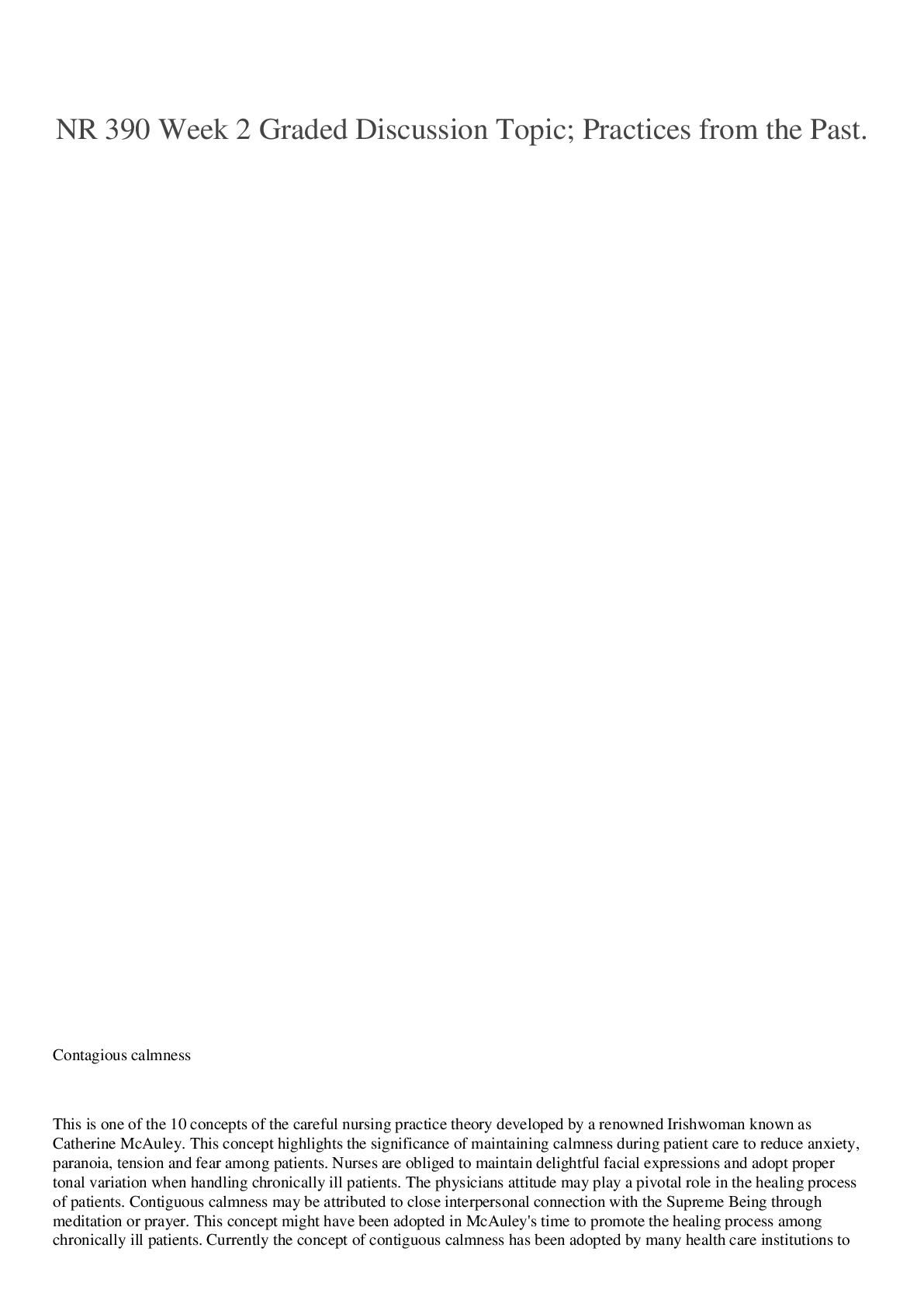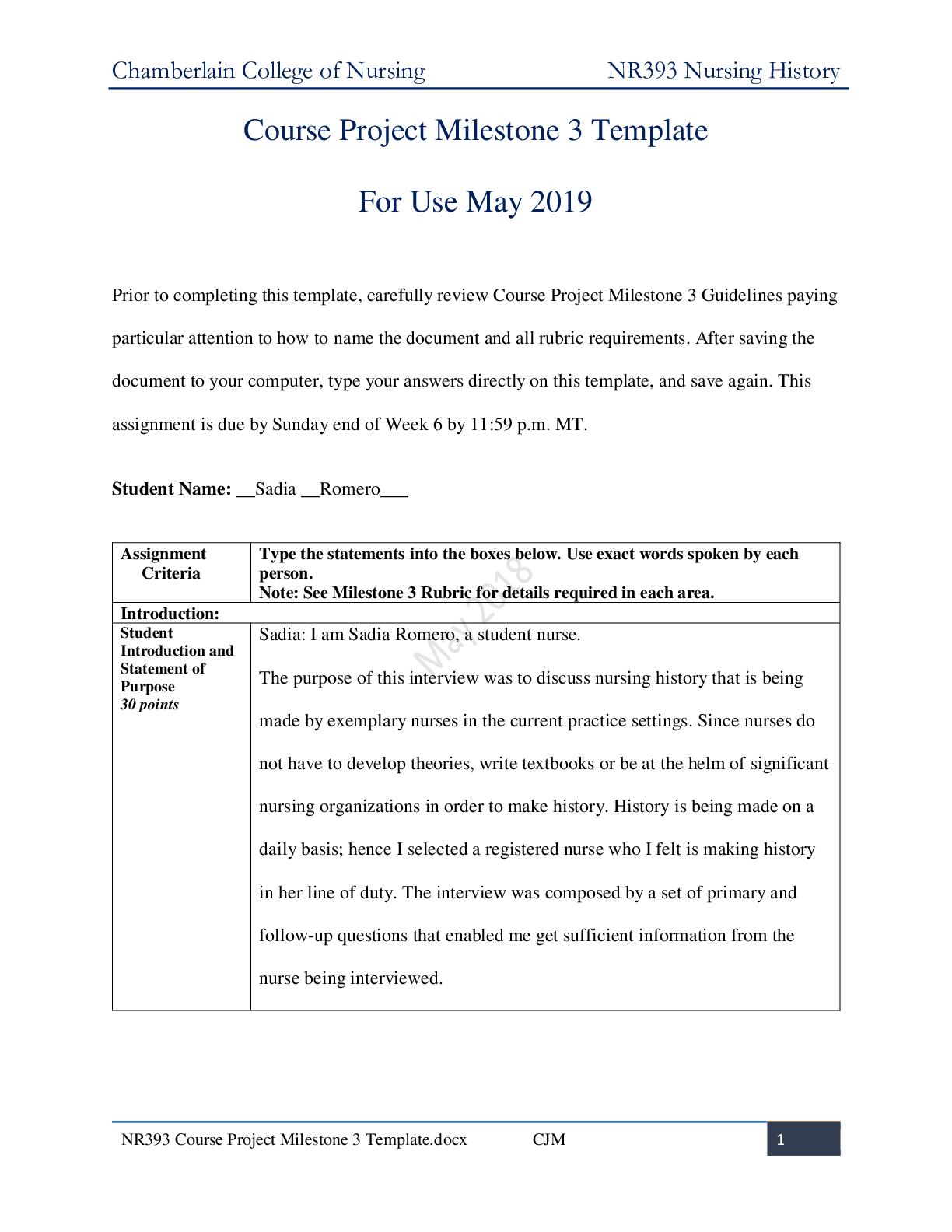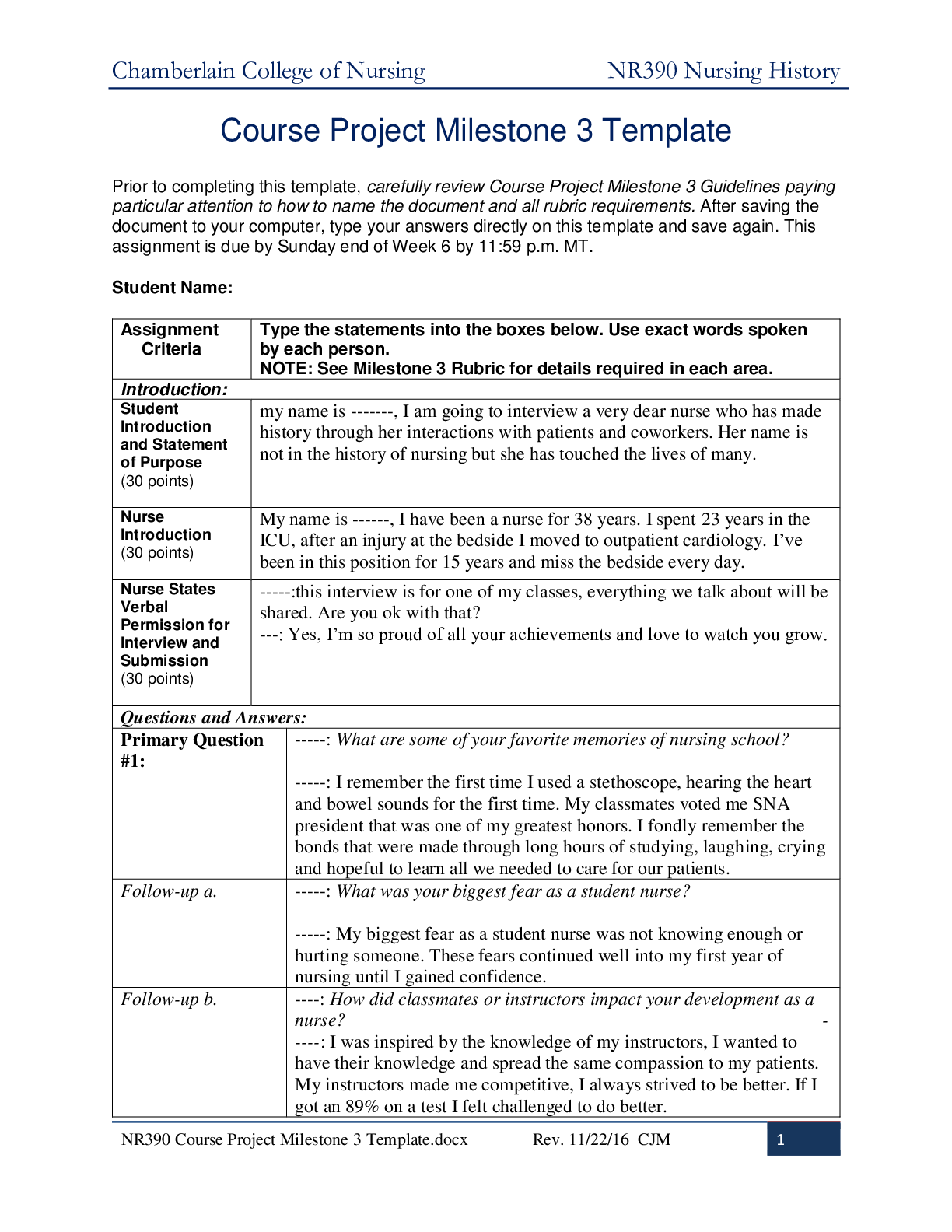*NURSING > STUDY GUIDE > NR 222 Unit 2 Health and Wellness Study guide {2020} - Chamberlain college of nursing {A+} | NR222 U (All)
NR 222 Unit 2 Health and Wellness Study guide {2020} - Chamberlain college of nursing {A+} | NR222 Unit 2 Health and Wellness Study guide {2020} - {A+}
Document Content and Description Below
NR 222 Unit 2 Health and Wellness Study guide {2020} - Chamberlain college of nursing {A+} Unit 2 Edelman Chp 10 Edelman Chp 10 1. Nursing and health education a. Health education i. Any comb... ination of planned learning experiences based on sound theories that provide individuals, groups, and communities the opportunity to acquire the info and the skills needed to make quality health decisions ii. Involves providing relevant info and facilitating health-related behavior change iii. Involves use of teaching-learning strategies, the learners maintaining voluntary control over decision to make changes in their actions, and focusing on behavior changes that have been found to improve health status iv. The nurse can assist in achieving their health goals so that they are consistent with personal lifestyles, values, and beliefs v. Health education encourages self-care, self-empowerment, and, ultimately, less dependence on the health care system vi. Use behavioral theory and social cognitive theory to develop health knowledge b. Health teaching and health promotion are primary nursing responsibilities i. Educating about healthy lifestyles, risk reduction, developmental needs, activities of daily living, and preventive self-care c. Nurse provides health teaching and counseling based on individual interests and decisions to enable individuals to make informed decisions about their health d. Goals i. Help individuals, families, and communities to achieve, through their own actions, optimal states of health ii. Health literacy 1. Degree to which individuals have capacity to obtain, process, and understand health info and services needed to make appropriate health decisions 2. Includes ability to read, write, speak, listen, compute, and comprehend, and to apply those skills to health situations iii. Strategies to promote health literacy: 1. Create a shame-free environment a. Encourage questions b. Show respect, helpfulness, and caring attitude c. Provide handout and review d. Convey empathy and reassurance e. Assist in form completion f. Speak slowly and distinctly g. Ensure privacy h. Ask for patient to share info and clarify i. Invite family member or friend j. Be positive and supportive 2. Use clear, purposeful communication a. Speak clearly and distinctly b. Use plain, everyday language c. Avoid medical terms d. Limit key points e. Face person f. Be specific and concrete g. Define new words h. Conclude with summary 3. Communicate in a person-centered manner a. Identify person’s personal motivators b. Asses unique interests and activities c. Address person’s main concern d. Link info to past experiences 4. Reinforce spoken word a. Use photos, audio, drawings, etc b. Select highly readable info iv. Health disparities 1. Systematic, potentially avoidable health differences that adversely affect socially disadvantaged groups 2. Addressing health literacy and providing culturally sensitive health education are critical to reducing health disparities v. How to facilitate learning 1. Stimulate variety of senses 2. Involve person actively 3. Establish comfortable learning environment 4. Assess readiness of learner, which may be affected by physical, social, emotional, and financial factors 5. Make info relevant 6. Use repetition 7. Make learning positive 8. Start with what’s known/simple to what’s unknown/complex 9. Apply to several settings 10. Pace learning appropriately e. Health behavior change i. Use of health belief model to analyze probability that person will make changes to improve health or prevent disease, the application of the social cognitive theory to clarify environmental and social factors that affect learning of new health behaviors, and the use of stages of change, or transtheoretical model in planning health teaching ii. Health behavior- any activities that an individual undertakes to enhance health, prevent disease, and detect and control symptoms of disease iii. Health belief model 1. Used to predict and explain health behavior 2. Developed to describe why people failed to participate in programs to detect or prevent disease 3. Explains responses to symptoms, disease, prescribed treatments, and potential health problems 4. Assists nurse in formulating action plan that meets needs and capabilities of individual making health behavior changes 5. Guidelines a. Individual perceptions or readiness for change b. Value of health to individual compared with other aspects of living c. Perceived susceptibility to health problem, disease, or complications d. Perceived susceptibility to health problem, disease, or complications e. Perceived seriousness of disease level threatening achievement of certain goals or aims f. Risk factors to disease attributed to heredity, race or culture, medical history, or other causes g. Perceived benefits of health action h. Perceived barriers to promotion action 6. Doesn’t specify interventions to influence individual’s likelihood of taking action 7. Explains role of values and beliefs in predicting treatment outcomes and adherence while generating data that guide nurses in choosing effective educational strategies iv. Social cognitive theory 1. Adds to understanding of determinants of health behavior 2. Emphasizes influence of self-efficacy (Bandura) on health - - - - - - - - - - - - - - - - - - - - - - - - - - - - - - - - - - - - - - - - - - e. Reinforcing i. Requires using a stimulus that increases probability for response ii. Reinforcement increases chance of learner to repeat behavior iii. Social reinforcers- smiles, compliments, or encouragement iv. Material reinforcers- food, toys, and music (best with children) v. Activity reinforcers- rely on principle that a person is motivated to engage in activity if he or she has opportunity to engage in more desirable activity after completion of task (ex: more likely to do mental health counseling after going outside for a walk) 10. Instructional methods a. Choose one that match a patient’s learning needs, time available for teaching, the setting, the resources available, and your comfort level with teaching b. One-on-one discussion i. Most common method ii. Nurse shares info directly in an informal manner, allowing patient to ask questions or share concerns iii. Use different teaching aids c. Group instruction i. Economical way to teach a number of patients at one time, and patients are able to interact with one another and learn from experiences of others ii. Involves lecture and discussion d. Preparatory instruction i. Providing info about procedures often decreases anxiety because patients have better idea of what to expect during procedure, which helps give them a sense of control ii. Describe physical sensations, cause of sensation, and only prepare patients for aspects of experience that are common e. Demonstrations i. Use when teaching psychomotor skills ii. Most effective when learners first observe teacher, then during a return demonstration, have a chance to practice skill iii. Combine with a discussion f. Analogies i. When teacher translates complex language or ideas into words or concepts that patient understands ii. Supplement verbal instruction with familiar images to make complex info more understandable g. Role play i. People are asked to play themselves or someone else ii. Patients learn required skills and feel more confident in being able to perform independently h. Simulation i. Useful for teaching problem solving, application, and independent thinking ii. Pose problem during discussion for patients to solve [Show More]
Last updated: 1 year ago
Preview 1 out of 12 pages
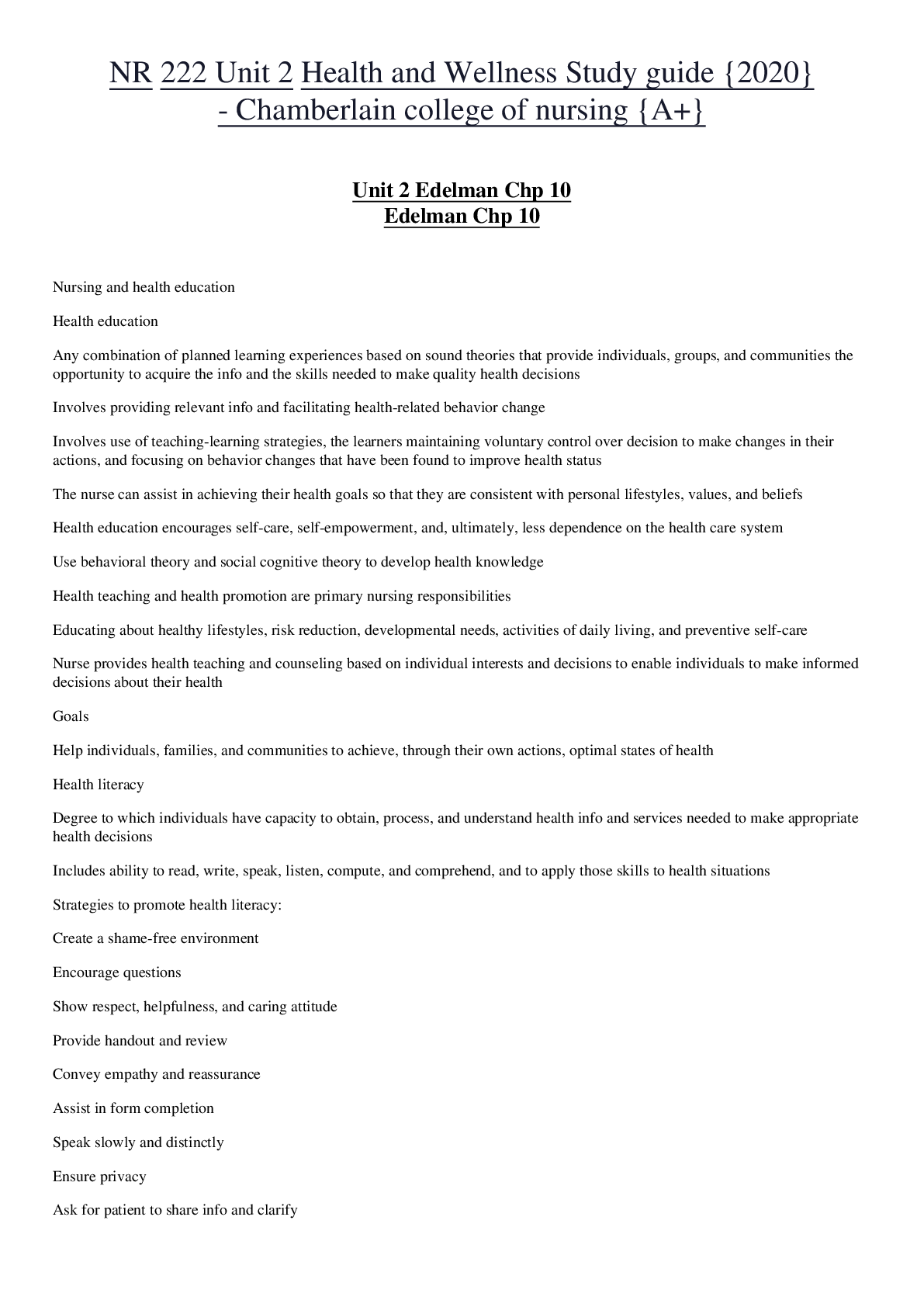
Buy this document to get the full access instantly
Instant Download Access after purchase
Add to cartInstant download
We Accept:

Reviews( 0 )
$11.50
Document information
Connected school, study & course
About the document
Uploaded On
Jan 21, 2021
Number of pages
12
Written in
Additional information
This document has been written for:
Uploaded
Jan 21, 2021
Downloads
0
Views
25

